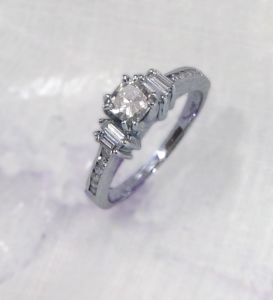One reoccurring question we receive in our practice is what constitutes “use in commerce” for a service mark. This question sounds simple enough, but often it involves a complicated analysis that is fact dependent. In a recent case before the Trademark Trial and Appeal Board (TTAB), David Couture (Couture), the owner of U.S. Registration No. 3560701 for the mark PLAYDOM misunderstood the law and what constituted use in commerce and as a result his trademark was cancelled. See Playdom, Inc. v. Couture, Cancellation No. 92051115 (February 3, 2014) [not precedential].
Couture applied for the mark PLAYDOM in standard character format on May 30, 2008. It registered on January 13, 2009. Couture filed a use-based application for entertainment and educational services with regard to script development for television and film production. Couture alleged that he first used the mark on May 30, 2008. Section 45 of the Trademark Act, 15 U.S.C. §1127 states that a service mark is used in commerce when the mark is used or displayed in the sale or advertising of the services and the services are rendered in commerce.
Unfortunately for Couture, Walt Disney & Co. (Disney) purchased a game development company known as Playdom. Disney was looking to expand its gaming presence online with social networks such as Facebook. On February 9, 2009 the company purchased by Disney filed an application for the mark PLAYDOM in International Classes 9, 41, 42, & 45. The application was refused because of a likelihood of confusion with Couture’s U.S. Registration for PLAYDOM. Soon thereafter, Playdom Inc. filed a cancellation action with the TTAB based on fraud on the PTO. To support its case the Petitioner (Playdom Inc.) submitted a letter written by Couture that essentially states that Couture had been advertising his services since the date of his filing, but he had not rendered the services identified in U.S. Registration No. 3560701. Petitioner argued that if this was the case, then the information contained in the trademark application was false.
 New York Trademark Attorney Blog
New York Trademark Attorney Blog







